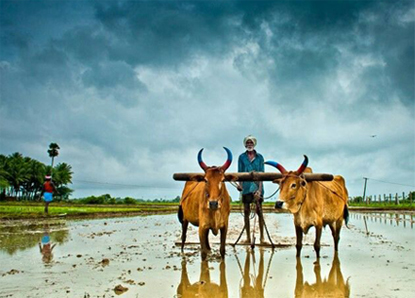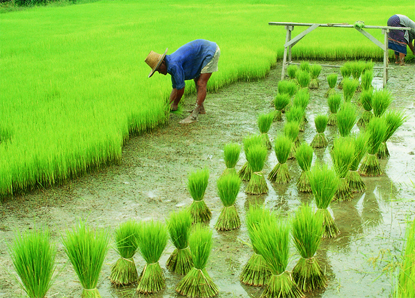


India have a large and diverse agriculture, it is the 2nd largest agricultural nation in the world. India among the world’s leading producer of rice, milk, sugar, vegetables, Eggs, fruits, Seafood products. Agriculture is continues to be as a backbone of our society and it provides livelihood to nearly 50% of Indian people.
The word Agriculture is derived from Latin word ‘Ager’ means land or field and ‘Culture’ means cultivation. Humans invented agriculture during the Neolithic era, or the New Stone Age, which occurred between 7,000 and 10,000 years ago. India’s agriculture begun in 9000 years ago. It is a result of early cultivation of plants and domestication of animals and considered as essential to survival of their lives.
Indus valley civilization is plays an important part in Indian history because irrigation process was developed in this era around 4500BCE. Majorly vast water storage and irrigation developed by Indus valley, it includes artificial reservoirs and canal irrigation.
Green revolution in India started in early 1960s. It majorly increases the food grain production in India especially in Punjab, Haryana, Uttar Pradesh. Green Revolution is a period when Indian agriculture adopted modern methods and technologies. Such as Tractors, pesticides, fertilizers, high Yielding variety seeds. It is mainly found by M.S.Swaminathan.

Green revolution in India started in early 1960s. It majorly increases the food grain production in India especially in Punjab, Haryana, Uttar Pradesh. Green Revolution is a period when Indian agriculture adopted modern methods and technologies. Such as Tractors, pesticides, fertilizers, high Yielding variety seeds. It is mainly found by M.S.Swaminathan.
Indian agriculture today is structurally different than what it was during the Green Revolution era. Between the early-1970s and the late-nineties, India's annual farm Gross Domestic Product (GDP) expanded from about US$25 billion to over US$100 billion. During this initial period, the growth was sluggish and it was largely cereals centric, limited to wheat and rice. However, between 2000 and 2014, the country’s agricultural production has surged from US$101 billion to about US$367 billion, driven mainly by high-value segments such as horticulture, dairy, poultry and inland aquaculture. No other country has a more diverse food and non-food agriculture base as India and this generates the optimism that India can be a leading player in the world agricultural trade.
| Food Grains | ||
|---|---|---|
| S.No | States | Capitals |
| 1 | Rice | West Bengal, UP, Andhra Pradesh |
| 2 | Wheat | U.P. (2) Punjab (3) Haryana |
| 3 | Bajra | Rajasthan (2) Gujarat (3) Maharashtra |
| 4 | Jowar | Maharashtra (2)Karnataka (3)Madhya Pradesh (M.P.) |
| 5 | Maize | Andhra Pradesh (2) Karnataka (3) Rajasthan |
| 6 | Pulses | M.P. (2) U.P. (3) Andhra Pradesh |
| 7 | Overall food grains | U.P. (2)Punjab (3) Madhya Pradesh |
| Food Grains | ||
|---|---|---|
| S.No | States | Capitals |
| 1 | Rice | West Bengal, UP, Andhra Pradesh |
| 2 | Wheat | U.P. (2) Punjab (3) Haryana |
| 3 | Bajra | Rajasthan (2) Gujarat (3) Maharashtra |
| 4 | Jowar | Maharashtra (2)Karnataka (3)Madhya Pradesh (M.P.) |
| 5 | Maize | Andhra Pradesh (2) Karnataka (3) Rajasthan |
| 6 | Pulses | M.P. (2) U.P. (3) Andhra Pradesh |
| 7 | Overall food grains | U.P. (2)Punjab (3) Madhya Pradesh |